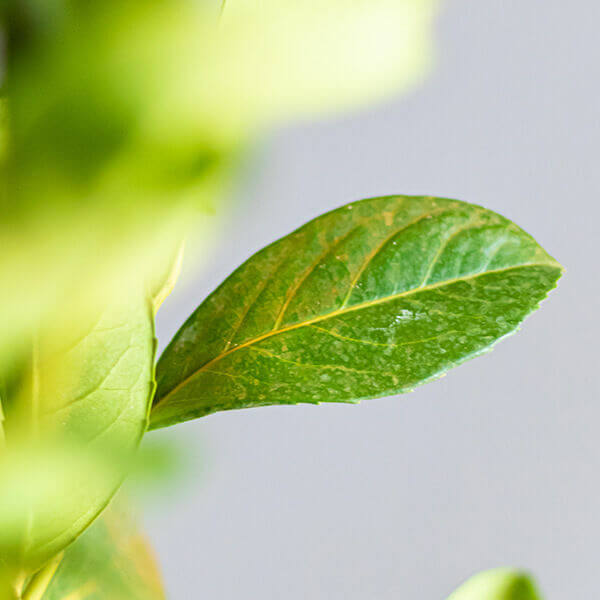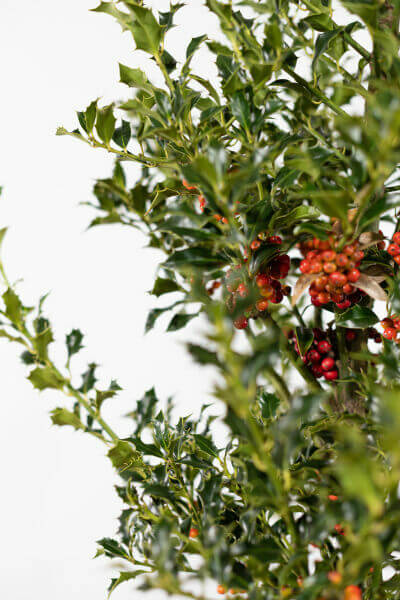Hedge Plants For Creating Shade
Hedge Plants For Creating Shade
Blog Article
Hedge Plants For Decorative Landscaping
Enhance your garden's allure with lush hedge varieties such as Yew (Taxus), Thuja, Laurel, Photinia, and Bamboo, commemorated for their structural integrity and ecological advantages.
Yew and Thuja provide evergreen protection and winter season durability, while Laurel offers fast development and broad, aromatic leaves.
Photinia includes seasonal charm with its dynamic red foliage, and Bamboo lends a low-maintenance, tranquil ambiance.
These hedges enhance air quality, reduce noise, and create tranquil, private areas.
Correct planting, spacing, and upkeep make sure vigorous growth and eco-friendly consistency.
Explore how these lavish ranges can elevate your garden's charm and wellness.
Secret Takeaways
Transform Your Garden With Lush Hedge Varieties
- Select Yew for its thick, evergreen development and unparalleled durability.
- Go with Laurel for its fast growth and broad leaves, guaranteeing fast personal privacy.
- Choose Photinia for its dynamic seasonal foliage, which turns a striking dark red.
- Use Bamboo for a low-maintenance, winter-hardy hedge with visual appeal.
- Area plants 2-3 per meter and prune regularly for optimal growth and health.
Popular Hedge Plants
When transforming a garden with rich hedge ranges, it's necessary to think about popular hedge plants such as Yew, Thuja, Laurel, and Photinia due to their unique qualities and advantages.
Yew (Taxus) is highly esteemed for its longevity and dense, green development, making it a prime option for withstanding landscapes.
Thuja is kept in mind for its evergreen foliage and robust winter durability.
Photinia includes seasonal vibrancy with red leaves that darken with time, developing vibrant visual appeal.
Laurel uses quick development and fragrant, broad leaves, suitable for quick privacy.
In Addition, Bamboo is an outstanding choice for ambiance, using a low-maintenance, winter-hardy alternative that boosts the garden's visual with its stylish, swaying canes.
These selections deal with a variety of horticultural requirements and choices.
Benefits of Garden Hedges
Garden hedges offer a multitude of advantages, making them an important addition to any landscape. These natural barriers are cost-efficient to carry out and provide considerable wind protection, enhancing air circulation and adding to sound reduction. The dense foliage of hedges like Thuja and Beech makes sure privacy by obstructing presence, producing a secluded and serene environment.
Hedges likewise play an important role in microclimate guideline, offering a steady environment that promotes plant development and decreases temperature level variations. Their elaborate leaf structures filter pollutants, enhancing air quality and contributing to a much healthier garden ecosystem.
Additionally, hedges excel in sound reduction, absorbing and deflecting sound waves to lower ambient noise levels. This double functionality of supplying both visual and acoustic personal privacy enhances the general harmony and aesthetic appeal of any garden.
Planting and Upkeep Tips
For a successful hedge, careful preparation of the planting location is essential. Make sure the soil has appropriate pH and drain to support strong root advancement.
Space the plants properly for the picked species. Water the hedge often throughout its preliminary growth phase, changing as required with seasonal changes.
Implement a organized pest control and disease avoidance strategy, utilizing chemical or natural treatments when needed. Regularly examine for aphids, termites, and fungal infections.
Apply mulch to maintain wetness and suppress weeds. Seasonal pruning promotes thick growth and air blood circulation, essential for plant health.
Following these standards will help you cultivate a vibrant, well-maintained hedge that boosts the beauty of your garden.
Spacing and Cutting Standards
Spacing and Trimming Standards
Appropriate spacing and trimming are essential for cultivating healthy, visually appealing hedges. Sufficient spacing makes sure each plant receives adequate nutrients, light, and air flow.
Follow these guidelines for optimal hedge upkeep:
- Spacing: Position hedge plants 2-3 plants per meter to encourage robust development.
- Pruning Methods: Routine pruning is essential for preserving preferred hedge height and shape. Cut brand-new development in summer season and cut down older wood throughout winter season.
- Seasonal Care: Adjust trimming schedules and approaches according to seasonal requirements to guarantee plant health.
- Hedge Height: Routinely monitor and cut to maintain the preferred hedge height and accomplish uniform aesthetic appeals.
Following these steps will ensure your hedge thrives, boosting both the appeal and performance of your garden.
Selecting the Right Hedge
Picking the Right Hedge
Picking the proper hedge involves evaluating factors such as fully grown height, foliage density, and environmental strength. Successful hedge plant selection requires comprehending each types' growth attributes and site-specific versatility.
For example, Yew (Taxus) uses outstanding longevity and dense growth, while Thuja is notable for its winter season durability. Additionally, thinking about maintenance requirements is vital; fast-growing species like Laurel or Privet need regular trimming, whereas low-maintenance alternatives like Bamboo or Ivy might be preferable for those seeking minimal maintenance.
Environmental aspects such as soil type, light accessibility, and wetness conditions ought to likewise assist the choice procedure. This cautious technique guarantees the chosen hedges will grow, offering both visual and functional benefits to the garden landscape.
Delivery and Planting Suggestions
To ensure your hedge plants prosper, they need to be delivered by specialized carriers and planted promptly upon arrival.
Follow these vital actions for successful planting:
- Soil Preparation: Enhance the soil with raw material to enhance drainage and nutrient content.
- Planting Depth: Develop a trench two times the width and equal to the depth of the root ball.
- Watering Strategies: Water thoroughly after planting, keeping the soil consistently damp however not filled.
- Mulching: Use a layer of mulch to keep wetness and reduce weeds.
Customer Assistance and Service
Given the important function of prompt help in horticultural pursuits, our consumer support team is available 6 days a week through telephone, e-mail, and social networks to offer skilled advice and swiftly deal with any concerns. Their commitment to quick reaction times guarantees client complete satisfaction by fixing questions related to plant health, optimum planting approaches, and upkeep schedules.

Reaction Time
Within 24 hours
This detailed support group, enhanced by an excellent 9.3/ 10 customer score, highlights our commitment to improving the gardening experience for every single customer.
Regularly Asked Concerns
For How Long Does It Consider Hedge Plants to Establish?
Hedge plants generally need one to three years to become fully established, with the precise duration varying by species and growing conditions.
Efficient care during this crucial period is essential for robust growth. Consistent watering, vigilant weed control, and click here proper fertilizer application are essential in promoting strong root advancement.
For instance, fast-growing species like Laurel may establish faster, while slower-growing ranges such as Yew may take longer. Thorough upkeep accelerates the establishment procedure, leading to thick and healthy hedges.
What Are the Finest Hedge Plants for Privacy?
The question of the finest hedge plants for personal privacy involves examining evergreen and deciduous alternatives.
Evergreen hedges like Thuja, Laurel, and Cypress offer year-round coverage, ensuring constant personal privacy.
In contrast, deciduous hedges such as Beech offer seasonal personal privacy, shedding leaves in chillier months.
Key maintenance suggestions for personal privacy hedges consist of regular cutting, fertilizing in spring, and appropriate spacing-- usually 2 to 3 plants per meter.
Furthermore, consistent watering and thorough weed removal are crucial for promoting healthy, thick growth.
Can Hedge Plants Draw In Wildlife to My Garden?
Yes, hedge plants can attract wildlife to your garden by supplying important benefits like shelter, food, and nesting websites, thereby boosting local biodiversity. Yew, holly, and laurel are exceptional for drawing in birds, while ivy supports a range of bugs.
Nevertheless, it is necessary to keep in mind that there are some drawbacks, such as increased upkeep to handle insects and routine upkeep. Carefully picking and maintaining hedge ranges can assist balance these disadvantages and advantages, eventually fostering a lively and sustainable community in your garden.
Exist Any Blooming Hedge Plants Available?
Yes, there are flowering hedge plants readily available that can enhance the charm of your garden.
For instance, Elaeagnus, also known as Olive Willow, produces fragrant white flowers in the fall, including a touch of sophistication.
Photinia, another popular option, showcases vibrant red leaves that mature into a rich green, developing a vibrant visual result throughout the seasons.
To ensure these plants prosper, it's vital to practice proper pruning methods and seasonal maintenance, such as trimming new development in the summer season and cutting down in the winter season.
These measures will help maintain the health and aesthetic appeal of your blooming hedges.
How Do I Avoid Bugs in My Hedge Plants?
To avoid bugs in hedge plants, employ natural insect control approaches and keep correct hedge care. Present beneficial pests like ladybugs, which victimize damaging bugs, to develop a well balanced environment.
Frequently check your hedges for indications of problem and without delay get rid of any afflicted parts to prevent the spread. Make sure the health of your hedges by using well balanced fertilizers and supplying adequate water.
Utilize mulching to retain soil moisture and correct spacing to minimize plant tension and promote robust growth. These practices collectively help in minimizing bug concerns and preserving a healthy hedge.
Conclusion
In essence, selecting the best hedge varieties such as Yew, Thuja, and Laurel can change any garden into a relaxing haven. These plants provide year-round plant, improve visual appeal, and offer practical benefits like noise reduction and wind defense.
Appropriate planting methods, precise spacing, constant watering, and seasonal trimming are vital for optimum growth.
Trustworthy delivery services and expert customer assistance guarantee a seamless experience from purchase to planting, making it easier than ever to elevate your outdoor area.
Garden hedges use a wide range of advantages, making them a valuable addition to any landscape. These natural barriers are cost-efficient to execute and provide substantial wind protection, improving air circulation and contributing to sound reduction. The dense foliage of hedges like Thuja and Beech makes sure privacy by obstructing exposure, creating a secluded and tranquil environment.

Pruning Strategies: Routine pruning is important for maintaining wanted hedge height and shape. Cut new development in summertime and cut back older wood during winter season.
Report this page